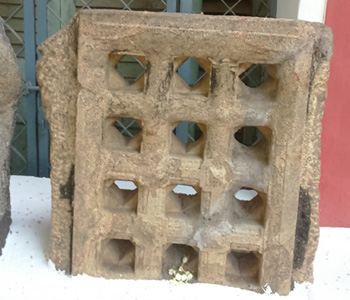Tiruchirappalli

Tiruchirappalli has the pride of having a well-established multipurpose government museum in the heart of the city. The museum is just a furlong away from the Rock fort temple and can be easily accessed from all the direction around it.
This district museum was set up in 1982 on the Government's principle of providing museums to all the districts and in that order it came as the third district museum after Salem and Madurai. At first, the museum was inaugurated in a rented building near the court complex. In order to provide room to the vigorous collection in the forms of sculptures, bronzes, fossils etc., the museum was shifted to the historical and spacious Rani mangammal Durbar hall in 1998 with the help of the district administration. Now the museum functions as a research and information centre in addition to being an institute of educative entertainments.
The fauna and flora of this district support a variety of animals and plants. Since Tiruchirappalli had been under the reign of all the rulers who ruled over Tamil Nadu, it has the traces of such rulers in the form of inscriptions and artifacts and as it is situated at the banks of river Cauvery, which has supported the social and cultural activities of life. These natural, historical and pre historical background forms a very rich source for the museum collection.
As The town Ariyalur and the places around it had been under the sea several crores of years back, fossilized molluscans are abundantly available in the area around that town. The museum has in its display and in reserve a number of such fossils including giant ammonites, bivalves and petrified woods.
The prime attraction of this museum is its sculptures . The sculptural collection of this museum provides strong evidence to the existence of Buddhism and Jainism in this district and to hold this two large sculpture of Buddha and a few sculptures of Jaina thirthankaras are in display at the entrance of the museum. Beautiful images of Hindu pantheon as sculptures adorn the galleries and several show cases. . The earliest form of Linga excavated from kattur near Lalgudi is unique and believed to belong to the period of 12th century A. D.
To illustrate the prehistoric life of this region a showcase containing stone tools of Palaeolithic and Neolithic assortments, potteries and potsherds are in the gallery besides a burial urn. Chola inscription and palm leaf manuscripts in display tell the way through which the ancient Tamil passed to reach the style it has today.
The Zoological gallery comprises a number of preserved insects, scorpion, starfishes, fishes, snakes, turtles, birds, and mammals. For the Botany section photographs of more than forty medicinal plants in their true colour are kept for the public visualization to describe their uses and other values.
The Ethnology case explains the material life of the Malayali tribe of the Pachamalai. There are showcases for musical instruments, woodcarvings, soapstone carving, and coins of India over different period. Treasure trove objects, Arms and Paintings of Tanjore tradition and contemporary period are also on display in the museum.
Popular lectures, different types of competitions for school and college students, research assistances for students and aspirants and special training programme for professionals and interested public are some of the museum's educational activities.
Contact Details :
The Curator,
Government Museum,
Rani Mangammal Mandram,
Town Hall,
Tiruchirapalli - 620 002.
musetry333@gmail.com
FEW IMPORTANT EXHIBITS :
© 2025 All Rights Reserved . Government Museum
Designed & Developed by Webtrendz Technologies India Pvt Ltd






